
Bulletin 9-10 (V:1-2), 1967
Home
Français
Introduction
History
Annual Index
Author &
Subject
Credits
Contact
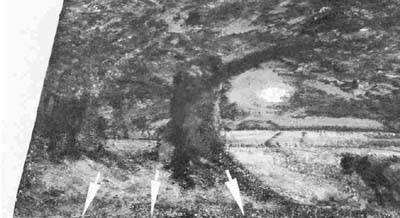
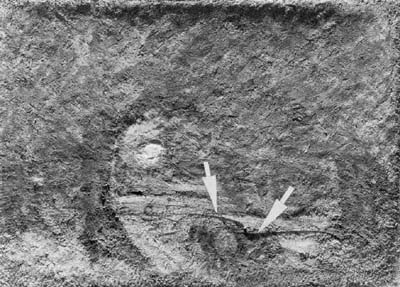
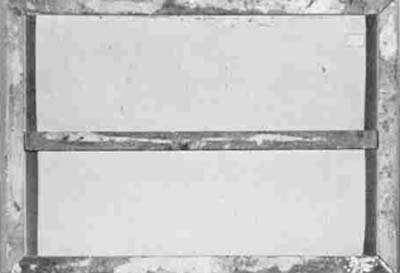
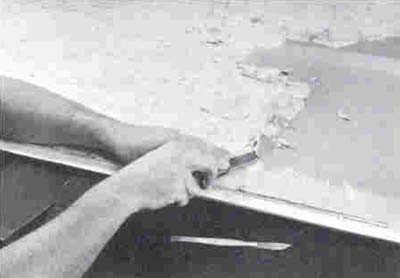
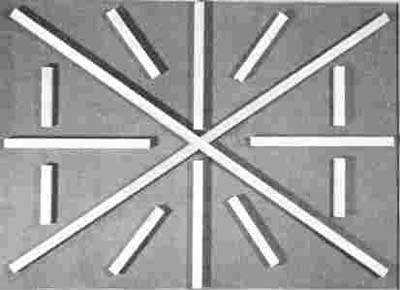
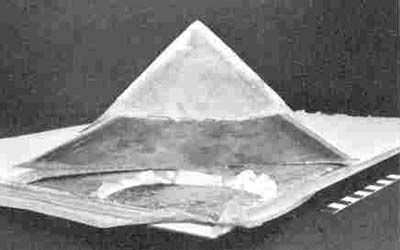
![]()
Combination
of Transfer and Marouflage
Treatment of a Homer Watson Painting
by Mervyn Ruggles, Conservator,
National Conservation Research
Laboratory National Gallery of Canada
Résumé en français
Pages 1 | 2
A retrospective exhibition of works by Homer Watson, (1)
arranged by Russel Harper, was sent by the National Gallery on a
cross-country tour in 1963. The preparators constructed sturdy
wooden cases in the National Gallery workshops for the paintings
that had been assembled for the tour. These cases contained three to
eight works of art, each fitted into separate carefully padded trays.
Sheets of 'I.-inch-thick Ten / Test fibre-board served as insulation
against extremes of temperature. (2) In spite of these elaborate precautions, the painting, The First
Snow (1923), listed in the catalogue as No. 53, suffered an
unusual kind of damage on its Canada-wide journey.
Investigation (3) of the wooden case and examination of the
painting itself indicated that the damage was caused by mishandling
of the case during transit and an inherent weakness in the
construction of the painting. The support of the painting
consisted of a 1/4-inch-thick sheet of heavy cardboard (4) secured by
means of wire staples to a pinewood framework having a
cross-section of 2 1/4 x 7/8 inches. The single horizontal crossbar was
not attached in any way to the cardboard. At a later date,
flat-head nails had been used to hold the cardboard more firmly to
its framework along the left, lower and right edges (Fig. 1). The
surface of the cardboard was covered with a single layer of grey
paint. Over this was a thick impasto, almost 1/2 inch in depth; the
coarse texture resembled a hardened sponge because of the numerous
cavities and pockets. There was no protective resin varnish coating
over the surface.
The photograph taken by oblique lighting (Fig. 2) shows the long
sweeping horizontal crack, seven inches above the lower edge with a
1/8- to 1 /16 -inch displacement from the plane of the surface. This
displacement was traced directly to the flexing of the cardboard support in a direction at right angles to the plane of the
painting. Had the cardboard been secured to the central horizontal
crossbar (Fig. 3), it is unlikely that such damage would have
occurred when the crate was accidentally dropped during loading
operations. Extensive separations developed between the surface of
the support and the first layer of paint over it.
As it was not possible to reattach the paint laver to the support by
infusing an adhesive, it was decided that the paint film on the cardboard support should be
transferred (5) to a more rigid built-up
panel. The description of the manner in which this process was
undertaken now follows. (6) The first step was to protect the
extremely
heavy paint structure by applying two layers of Aldex13 wet-strength
tissue paper (7) over the surface by means of dilute parchment size. The
painting was then placed under vacuum at room temperature to promoie
intimate contact between the tissue paper and the unusually
irregular topography of the paint surface.
The support then had to be detached from the wood framework; this
was done by inserting a hacksaw blade carefully and cutting
through the staples and nails. Before removal of the cardboard
support was attempted, a wax-resin adhesive mixture consisting of
four parts beeswax, four parts Multiwax 835 and two parts AW-2 resin
was brushed over the tissue facing and over a sheet of cardboard 1/4
inch thick and 1 inch larger on all sides than the dimensions of the
painting. The prepared cardboard was placed over the picture positioned under vacuum on the hot table. After the painting had
returned to room temperature and the rigid facing had become firmly
attached to the paint surface, a surgical scalpel was used to peel
away the cardboard support. Special care was exercised in the
regions where displacement of the paint laver had occurred. Partial
removal of the support is demonstrated in Fig. 4.
When the back of the painting had been completely exposed, lining
was carried out on heavy-grade linen having 32 warp and 27 weft
double threads per inch, by using the wax-resin mixture cited
earlier and the vacuum hot table. (8)
After this normal lining procedure, the painting was marouflaged(9) to
a built-up panel (Fig. 5). This panel was constructed with a
1/4-inch
sheet of untempered masonite on the front and a 1/8-inch sheet of
untempered masonite on the back, separated by 5/8 x 1 inch spacers
glued in place with a polyvinvl acetate emulsion. As a fungicide and
insecticide treatment, a solution of 2% pentachlorophenol and paràdichlorbenzene
dissolved in carbon tetrachloride was brushed on all interior surfaces of the panel before assembly. Outer surfaces and edges were
impregnated with the wax-resin adhesive prior to marouflage on the
vacuum hot table. A mylar covering sheet sealed to the edges of the
table with 1-inch masking tape replaced the usual rubber dam. The
transparency of the mylar sheet and the more efficient vacuum seal
achieved by the masking tape make this method advantageous.
Before the paint surface had reached the peak temperature of
64 °C.
the mylar sheet was folded back, and gently manipulated 50 that it
could be released by the now soft wax-resin above the Aldex paper.
This made it possible to take off the cardboard facing without
disturbing the paint layer still protected by the tissue. The
purpose of the cardboard facing had now been served. The marouflage
process was then resumed under vacuum until bonding to the panel was
complete. Figure 6 shows the position of the cardboard and tissue
facing after the lining and the marouflage had been completed but
before mineral spirit and water had been used to take away the
protective tissue facing.
The displaced paint had levelled and appeared to be firmly
reattached to the new supports. The margins of the lining canvas
were tacked to the edges of the panel in the customary manner and
specially made L-shaped aluminum strips were extended slightly
beyond the face of the painting to shield the paint film from
abrasion by the frame rabbet.
Small insertions of chalk gesso were required to compensate for an
old 3/4 x 3/4 inch paint at the upper left corner, two 1/4 x 1/4 inch ones at lower margin near the centre and a
1/2 x 3/4 inch one at
the right-hand margin near the centre. These were inpainted with
pigment in normal butyl methacrylate-xylene medium. Final
protective treatment consisted of three applications of the same
acrylic polymer; this was done by means of spraying.
Next Page | Notes
1 | 2
Annual Index | Author & Subject | Credits | Contact
This digital collection
was produced under contract to Canada's Digital Collections program,
Industry Canada.
"Digital
Collections Program, Copyright
© National Gallery of
Canada 2001"